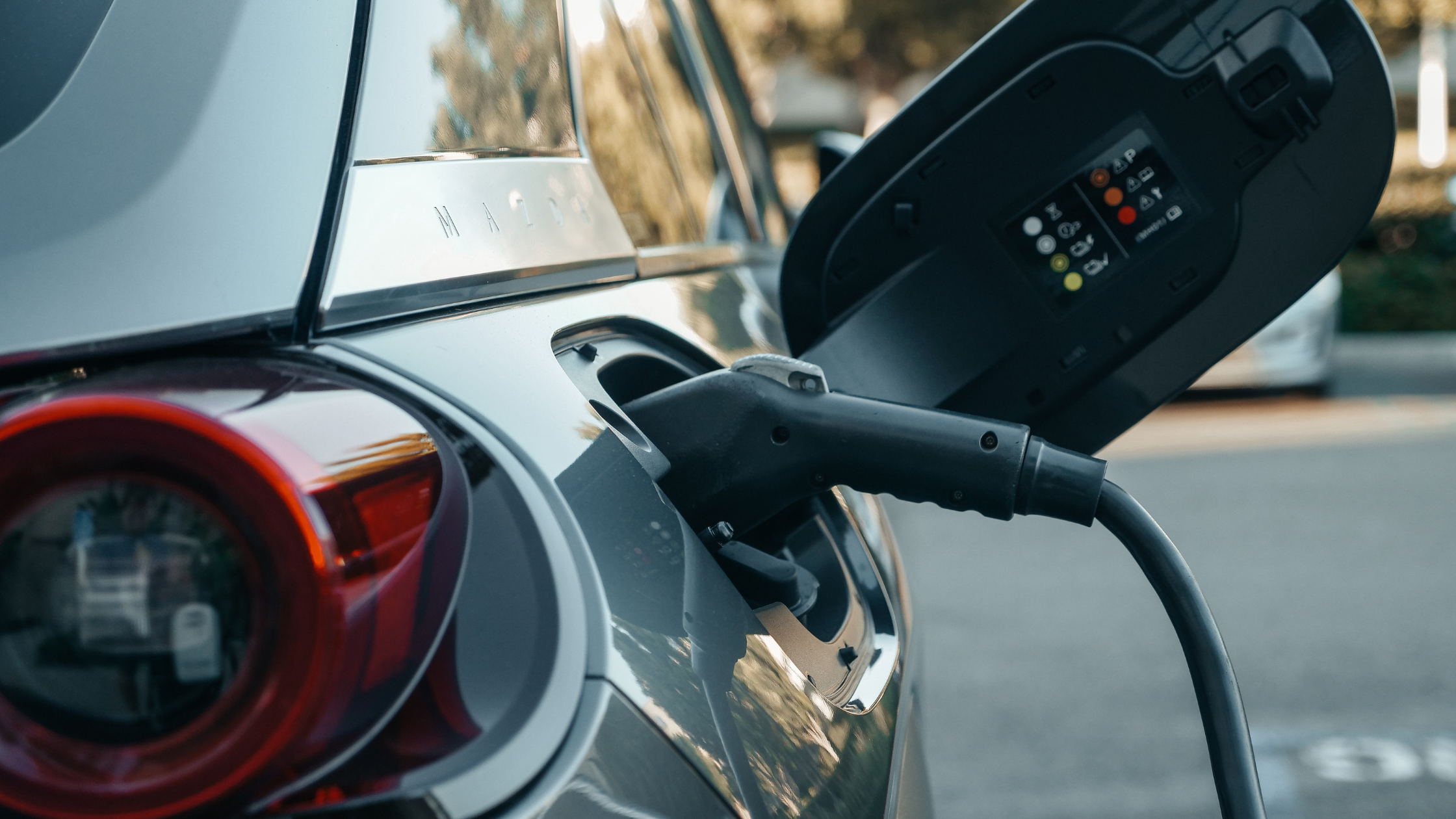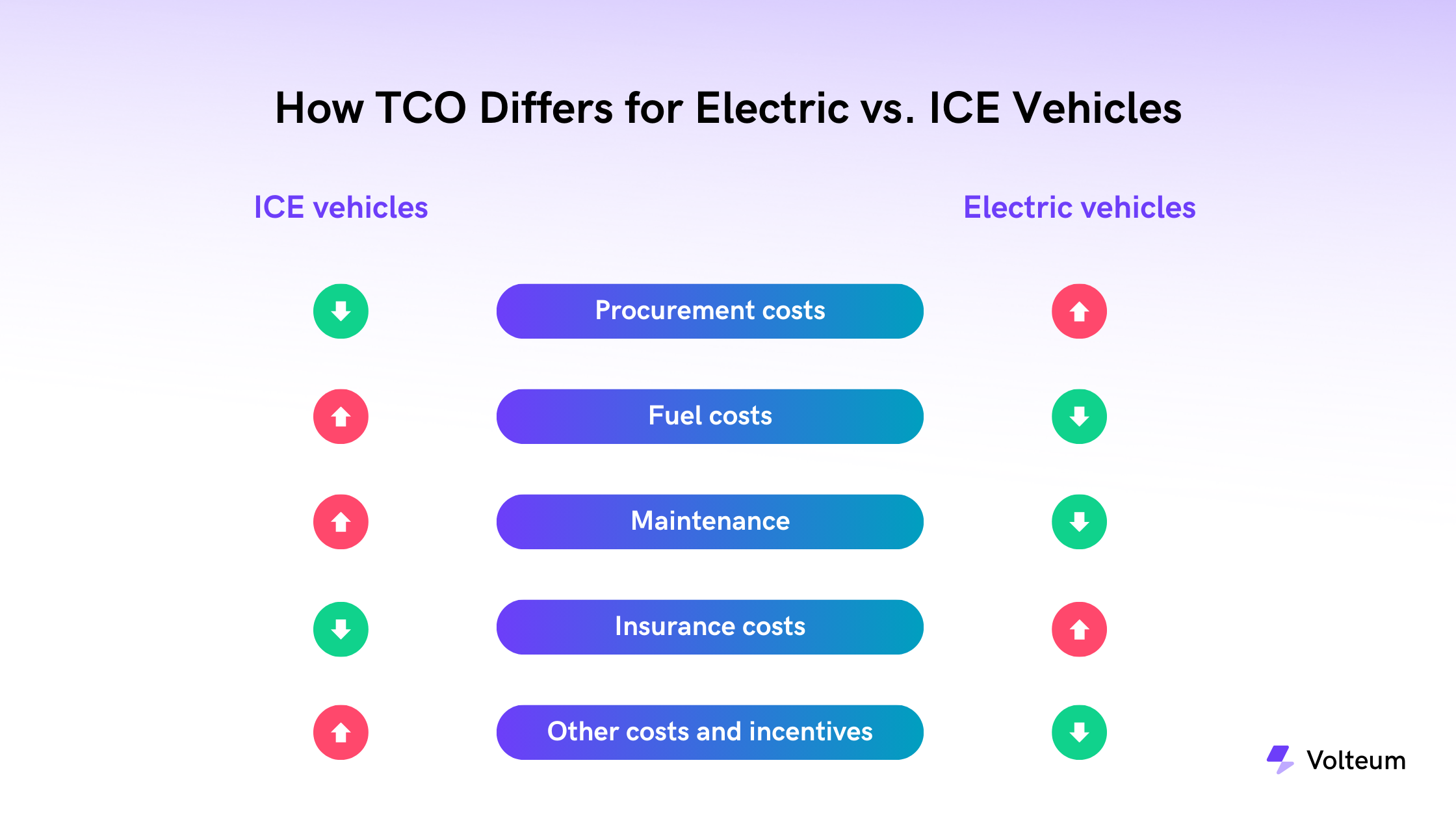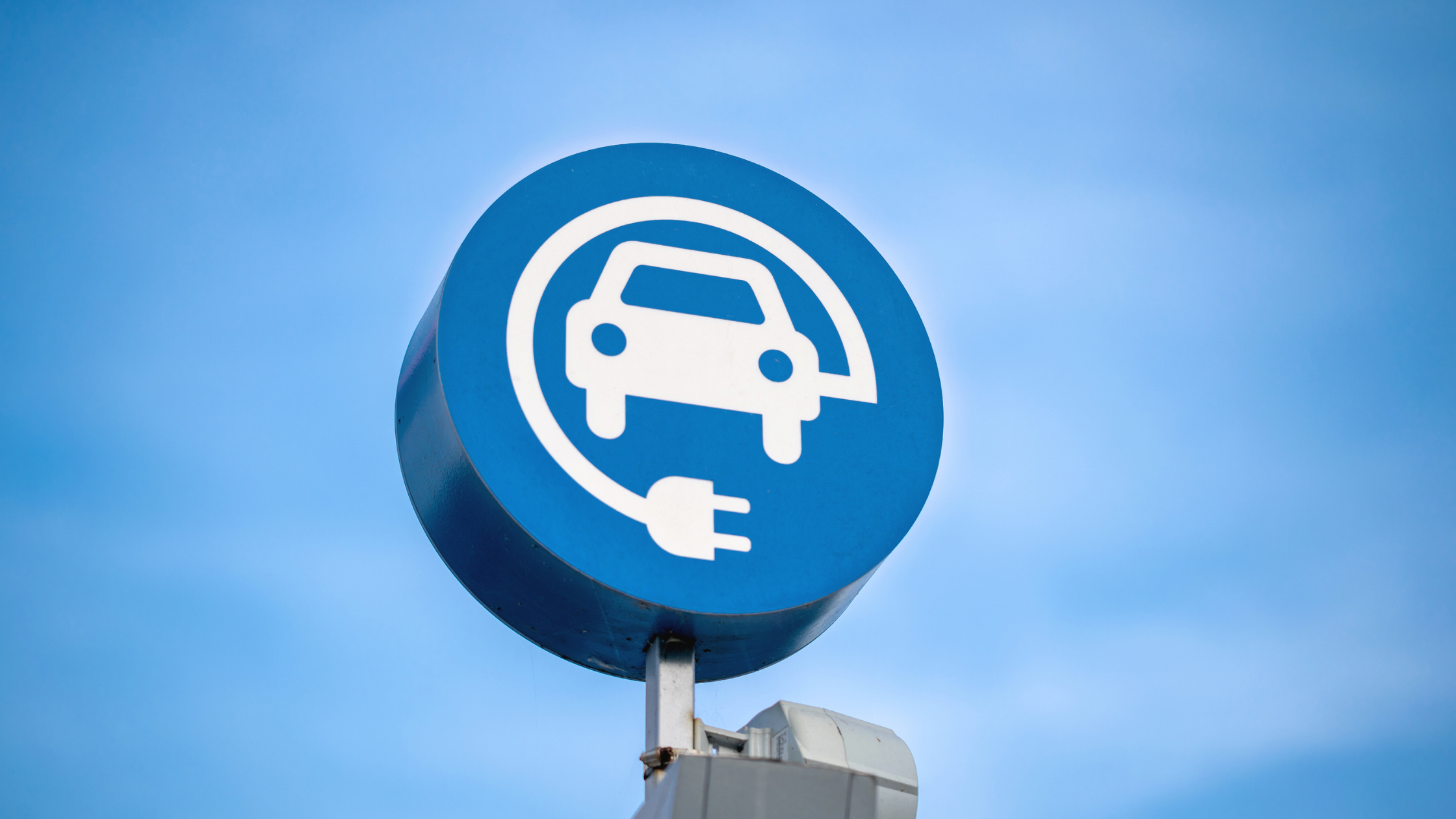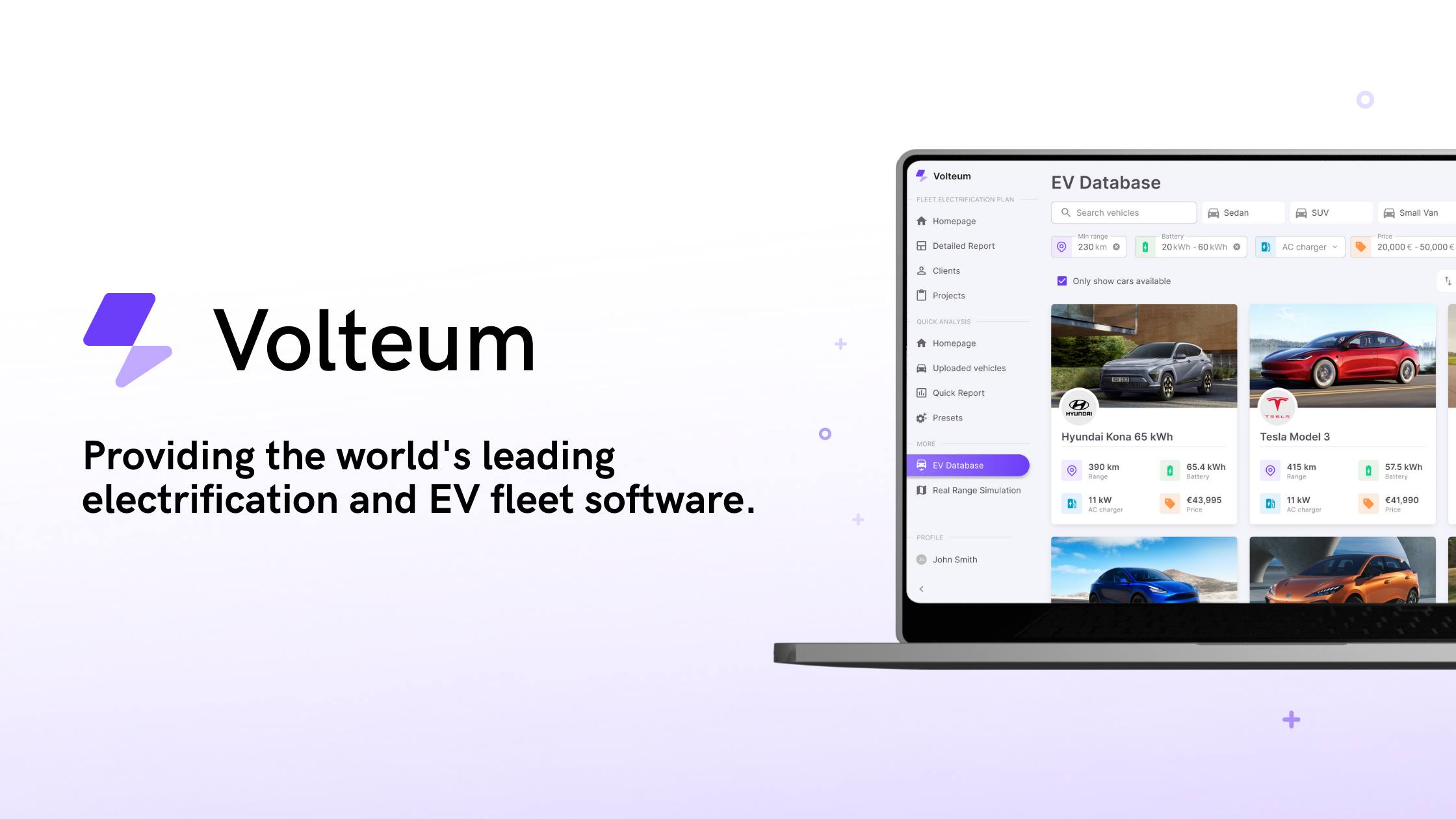The business case for EV fleets and Total Cost of Ownership
Feb 09, 2025 · 8 min read · blog
Fleet electrification is no longer just about sustainability—it’s a strategic business decision that can drive cost savings, operational efficiency, and compliance with evolving regulations. However, transitioning to electric vehicles (EVs) requires careful financial planning, and understanding Total Cost of Ownership (TCO) is key to making informed choices.
To address this crucial topic, Volteum partnered with Climate Group in December 2024 for a webinar titled "The Business Case for Fleet Electrification: Exploring Total Cost of Ownership." Led by Zsofia Toth, Co-Founder & CEO of Volteum, the session provided fleet operators with actionable insights on how to evaluate EV costs, optimize fleet spending, and navigate the transition successfully.
In this blog, we recap the key takeaways from the webinar, exploring global electrification trends, cost breakdowns, and strategies to make EV adoption financially viable for fleets.
Understanding Total Cost of Ownership in fleet electrification
One of the key takeaways from the webinar was that Total Cost of Ownership is the most important financial metric when comparing electric and internal combustion engine (ICE) vehicles. While upfront costs are often the first concern for businesses, TCO provides a full-picture view of the costs associated with owning and operating a vehicle throughout its lifecycle.
Breaking down the key components of TCO
- Procurement costs: EVs typically have higher upfront purchase prices than ICE vehicles, but businesses can mitigate these costs through leasing, rental, or incentive programs. Fleet operators need to carefully evaluate whether buying or leasing EVs is the most cost-effective option for their operations.
- Fuel costs: One of the biggest cost advantages of EVs is fuel savings. Charging an EV—especially at home or the office—can cost significantly less per kilometer than gasoline or diesel. Additionally, electricity prices are more stable than fuel prices, offering better cost predictability.
- Maintenance: EVs have fewer moving parts than ICE vehicles, which means lower maintenance costs. Businesses can save on expenses like oil changes, engine repairs, and transmission replacements, all of which contribute to a lower TCO over time.
- Insurance: While insurance costs for EVs can sometimes be higher in regions where repair costs remain expensive, government policies and growing market maturity are helping to bring these costs down. Some insurers also offer discounts for EV fleets due to their lower failure rates and reduced wear and tear.
- Residual value: The resale value of EVs is still evolving, but as battery technology improves and EV adoption increases, depreciation rates are expected to stabilize. Fleet operators need to factor in expected resale values when calculating long-term costs.
- Additional incentives: Many governments and cities offer financial incentives to encourage fleet electrification, such as tax credits, toll exemptions, and access to low-emission zones. These incentives can significantly improve the overall financial case for EV adoption.
If these TCO components are evaluated holistically, businesses can move beyond just looking at the initial purchase price and instead focus on the long-term cost benefits of fleet electrification.

Comparing TCO: electric vs. ICE vehicles
While EVs often require a higher initial investment, the long-term cost advantages outweigh these upfront costs. During the webinar, Volteum’s analysis highlighted key cost differences between electric and ICE vehicles, reinforcing the financial benefits of electrification.
Key cost comparisons
- Higher upfront costs vs. lower operating costs: EVs may have higher purchase prices, but lower fuel, maintenance, and operational costs make them more affordable over time.
- Fuel cost savings: Charging an EV at home or the office can reduce energy expenses by 40-60% compared to diesel or petrol costs. Public charging, while more expensive, is still often cheaper than fueling an ICE vehicle.
- Lower maintenance costs: With fewer components prone to wear and tear, EVs experience fewer breakdowns and require less servicing. This not only saves money but also reduces vehicle downtime, improving overall fleet efficiency.
Fleet operators must recognize that TCO—not just upfront cost—should be the deciding factor when considering electrification. The financial case for EVs becomes stronger the longer the fleet operates, making it an increasingly attractive investment.

Optimizing TCO for fleet electrification
Understanding TCO is just the first step. To maximize cost savings and efficiency, businesses need to strategically optimize key elements of their fleet electrification process.
1. Choosing the right EV model
Selecting the right EV model is crucial to maximizing cost savings and operational efficiency. Businesses should:
- Analyze fleet usage patterns to ensure EVs meet daily mileage needs.
- Consider employee feedback to select vehicles that align with driver needs.
- Evaluate different vehicle models independently rather than relying solely on leasing company recommendations.
2. Leasing vs. purchasing
While leasing remains a popular option, some large fleets are shifting toward purchasing EVs outright to:
- Gain full control over resale timing and residual value risks.
- Reduce reliance on leasing company depreciation models.
- Take advantage of incentives and grants that may not apply to leased vehicles.
Fleet managers should continuously monitor EV market trends to ensure they are making the most cost-effective procurement decisions.
3. Building an efficient charging strategy
Charging costs play a huge role in TCO, so businesses must plan a charging strategy that minimizes expenses:
- Home charging – The most cost-effective solution, but requires reimbursement policies for employees.
- Office charging – A structured option for fleets returning to a depot, but requires infrastructure investment.
- Public charging – Offers flexibility but is the most expensive option, so usage should be minimized.
4. Infrastructure planning
A well-planned charging infrastructure can save fleets thousands in operational costs annually. Businesses should:
- Identify optimal charging locations based on fleet routes.
- Assess electricity pricing differences to ensure cost-effective charging.
- Plan infrastructure years in advance to avoid grid capacity limitations.
By combining the right EV selection, procurement strategy, and charging infrastructure, businesses can achieve the lowest possible TCO for their electric fleets.

Real-life fleet electrification case study
To demonstrate the real-world impact of fleet electrification, the webinar featured a case study from a fleet that transitioned to EVs using Volteum’s analysis tools.
Key findings
- 78% fuel cost reduction and 88% CO₂ emissions cut after transitioning to electric.
- TCO analysis identified 34 vehicles suitable for electrification, with 13 vehicles selected for immediate transition.
- Charging strategy optimization led to a mix of home, office, and AC chargers to maximize cost savings.
This case study reinforced a crucial point: fleet electrification is not just about sustainability—it’s a financially smart move when planned effectively.

Key takeaways from the webinar
The Volteum & Climate Group webinar made it clear that fleet electrification is inevitable. The financial and operational benefits of EV adoption far outweigh the challenges, but success depends on careful planning and strategic execution.
Key lessons from the session
- Fleet electrification is no longer optional – Rising fuel costs and stricter emissions regulations make the transition essential.
- TCO is the key decision-making metric – Businesses should focus on long-term cost efficiency, not just upfront investment.
- Charging strategy is critical – A well-planned mix of home, office, and public charging can significantly reduce operational expenses.
- Early planning is key – Delaying electrification can lead to higher costs, missed incentives, and infrastructure challenges.
Businesses that start electrification planning now will gain a competitive advantage, reduce costs, and future-proof their fleets.

Conclusion
Fleet electrification is no longer just an environmental choice—it’s a smart financial decision. While EVs may have higher upfront costs, their lower fuel, maintenance, and operational expenses make them a cost-effective long-term investment.
The Volteum & Climate Group webinar highlighted how optimizing TCO, selecting the right EVs, and building an efficient charging strategy can significantly reduce costs and improve fleet efficiency. A real-life case study showed that with proper planning, businesses can achieve up to 78% fuel cost savings and 88% CO₂ reductions.
As fleet electrification accelerates, early planning is key. If you are exploring your next steps, Volteum is here to help — reach out at info@volteum.io to learn how we can support your transition.